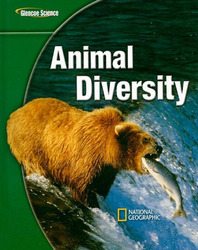1.
A) Snakes eat rats and mice. B) Snakes are biological indicators. C) Snakes eat grain. D) Snake eggs are good to eat. 2.
A) lateral line B) swim bladder C) lung D) gill cover 3.
A) shell B) skin C) notochord D) lungs 4.
A) cartilaginous fish B) lungfish C) ray-finned fish D) lobe-finned fish 5.
A) gills B) three-chambered hearts C) swim bladders D) lungs 6.
A) nerve cord B) endoskeleton of bone or cartilage C) gill slits for filter feeding D) brain 7.
A) fins B) scales C) gills D) eggs 8.
A) fossil B) pollutant C) erosion D) biological 9.
A) They are covered by a shell. B) They develop in the male. C) They are fertilized externally. D) They are small. 10.
A) snake B) salamander C) turtle D) lizard 11.
A) vertebrates B) amphibians C) reptiles D) bony fish 12.
A) Its temperature should go down. B) Its body temperature should be 0ºC. C) Its temperature should not change much. D) Its temperature should go up. 13.
A) a special joint in their jaw B) internal fertilization C) the ability to constrict D) venom 14.
A) ray-finned fish B) cartilaginous fish C) lungfish D) jawless fish 15.
A) spawning B) external fertilization C) internal fertilization D) hatching 16.
A) circulation B) respiration C) development D) reproduction 17.
A) blood system B) lateral line system C) gas exchange system D) reproductive system 18.
A) tongues attached at the front of the mouth B) moist skin C) nostrils on top of the head D) tympanic membranes 19.
A) turtles B) crocodiles C) snakes D) lizards 20.
A) two-chambered B) four-chambered C) three-chambered D) one-chambered





